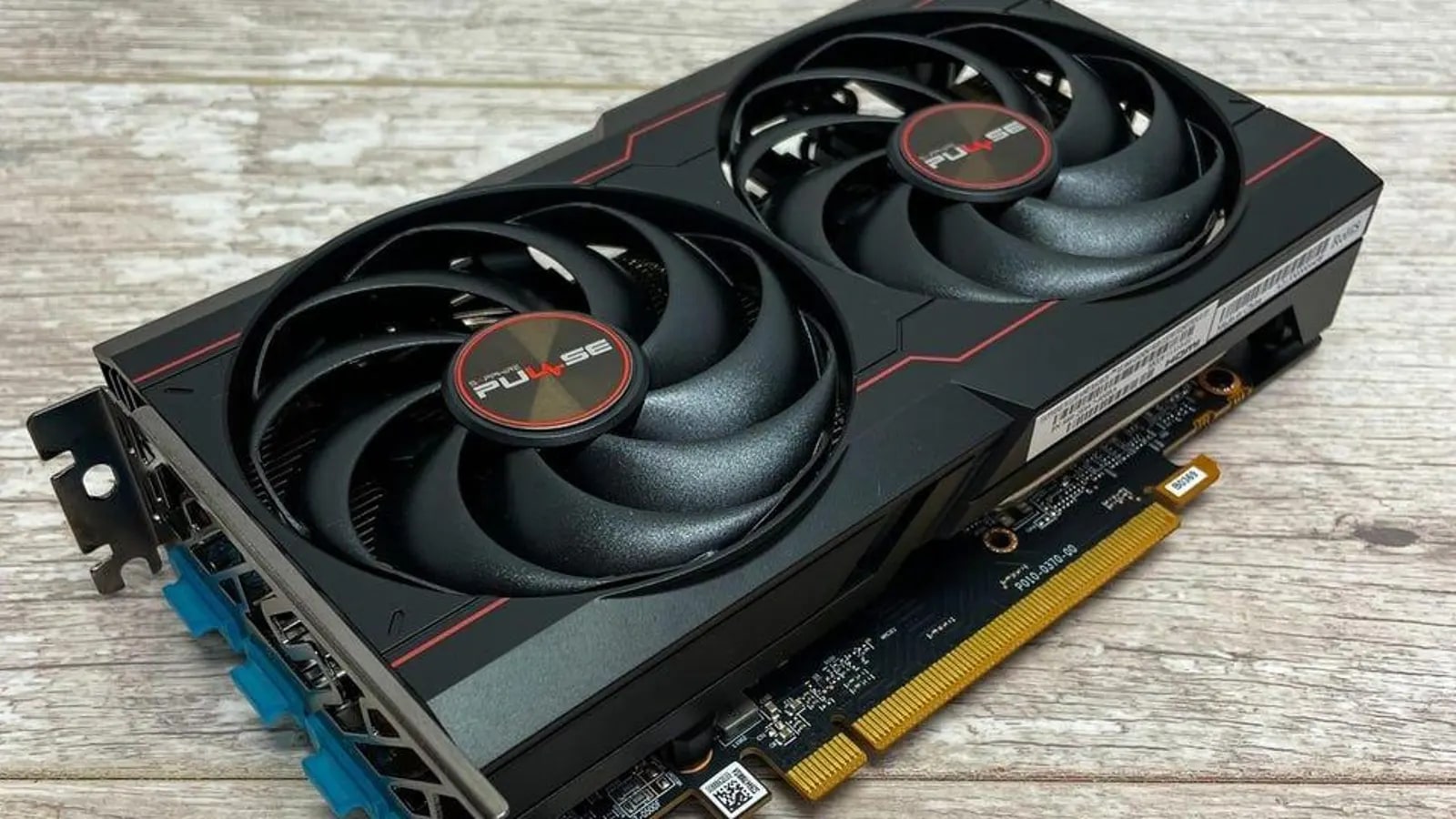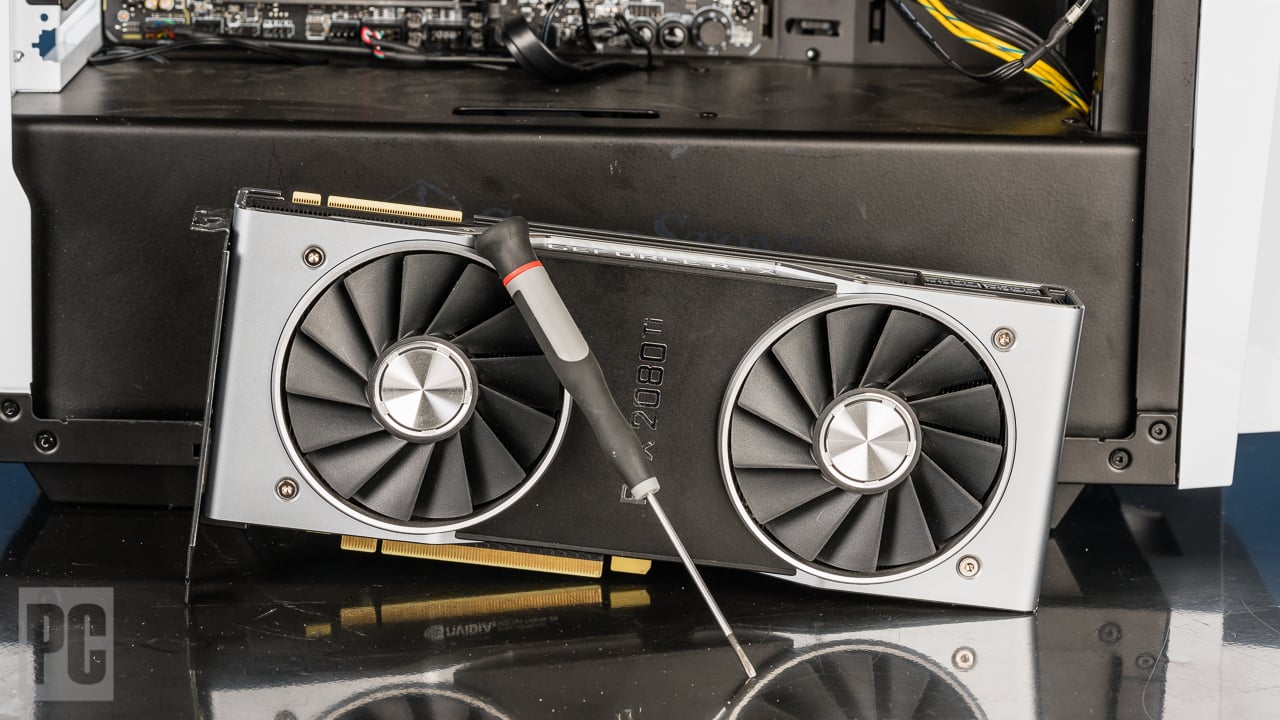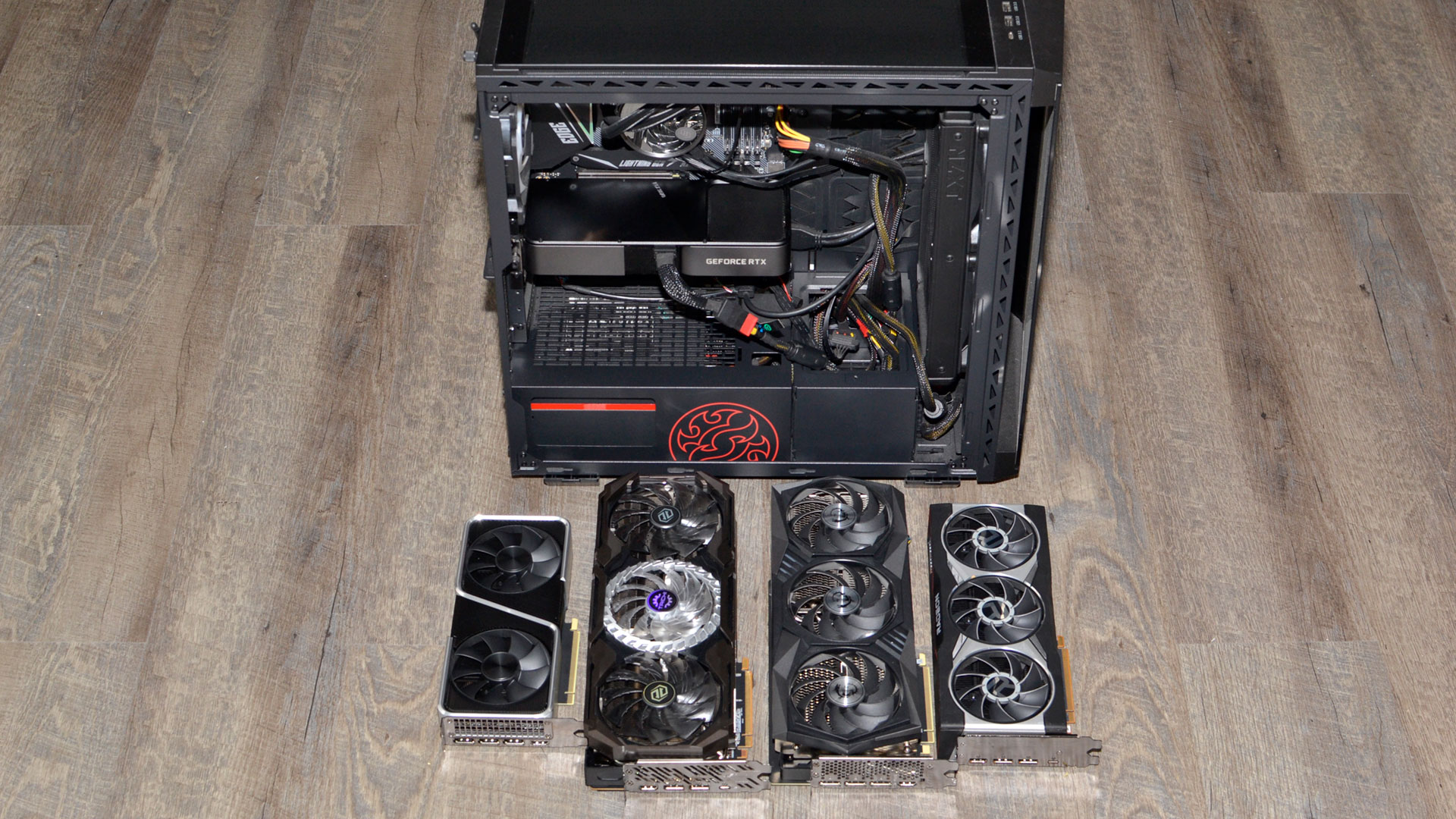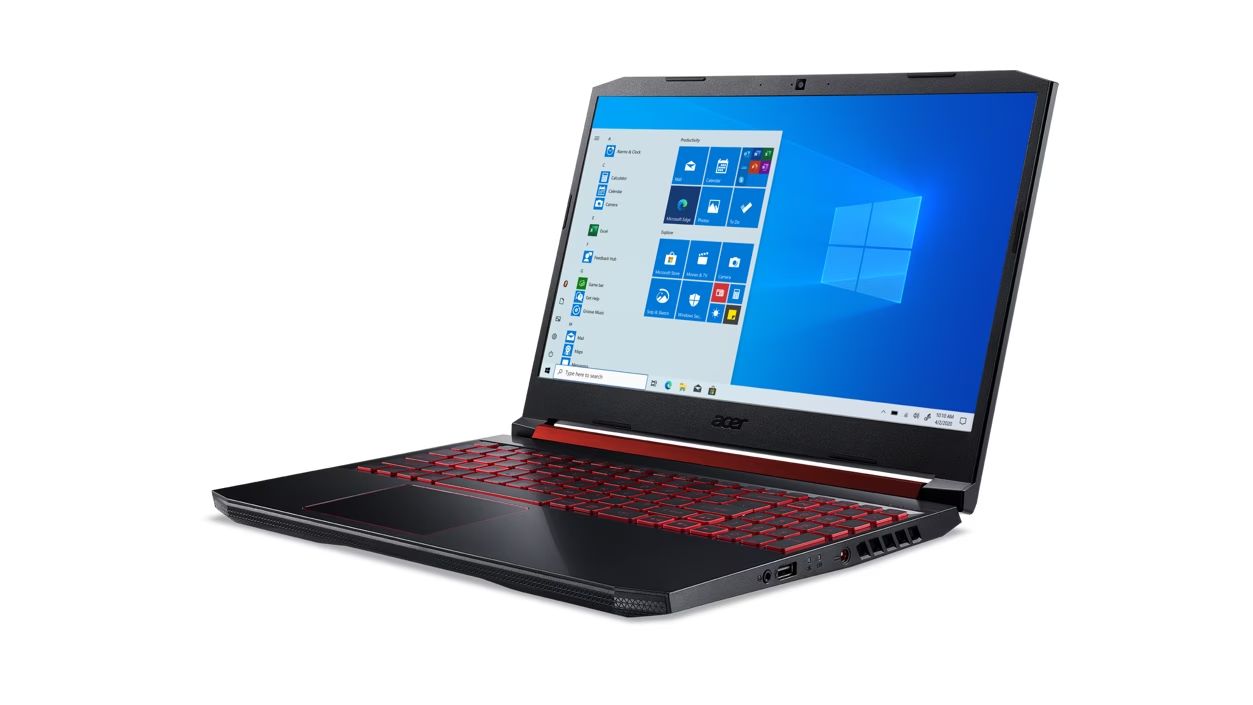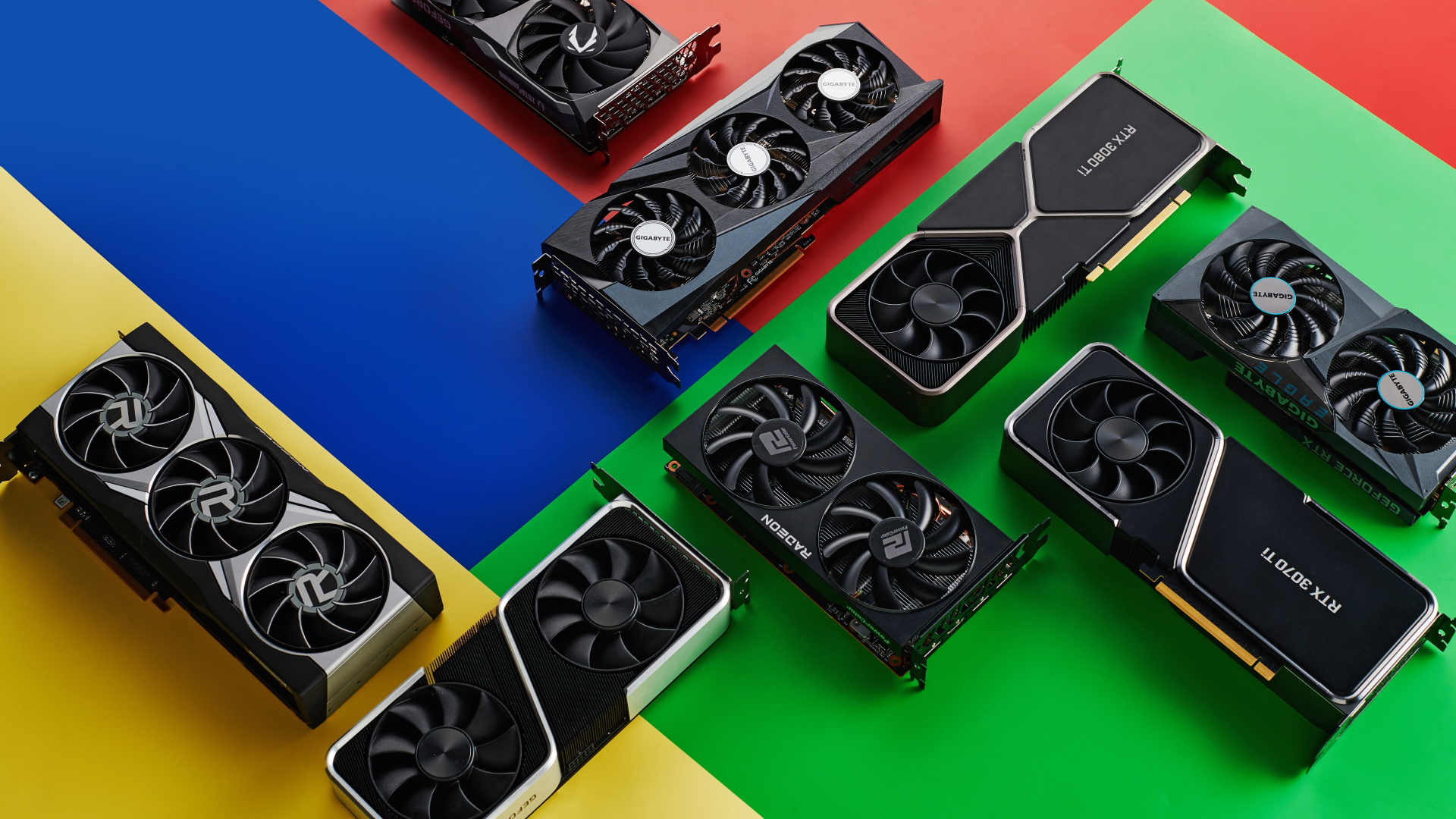Introduction
Choosing the right graphics card is a crucial decision for any computer user, whether you’re a gamer, designer, or simply someone who enjoys multimedia content. A graphics card, also known as a video card or GPU (Graphics Processing Unit), is responsible for rendering and displaying images, videos, and animations on your computer screen. It plays a vital role in determining the quality and performance of visuals in various applications and games.
When it comes to graphics cards, there are a plethora of options available in the market. From high-end powerhouse GPUs to entry-level budget-friendly options, there’s a card for every need and budget. However, if you’re looking for a balance between performance and affordability, a mid-range graphics card is often the sweet spot.
A mid-range graphics card offers a great blend of price, performance, and features. It strikes a balance between high-end graphics cards that can break the bank and entry-level cards that may not have enough power to handle demanding tasks. The mid-range graphics card segment caters to the needs of gamers and professionals who require a capable GPU for smooth gaming, content creation, and multimedia editing.
As technology continues to advance, mid-range graphics cards are becoming increasingly powerful, often offering performance comparable to previous generation high-end cards at a fraction of the cost. This makes them an attractive choice for users who want to enjoy a smooth gaming experience, high-quality visuals, and efficient multimedia editing without breaking the bank.
In this article, we will explore what exactly a mid-range graphics card is, discuss the factors to consider when choosing one, delve into the performance of these cards, highlight some popular options in the market, and provide guidance on how to choose the right mid-range graphics card for your specific needs. So, let’s dive in and discover the world of mid-range graphics cards!
What is a Graphics Card?
A graphics card, also referred to as a video card or GPU (Graphics Processing Unit), is a crucial component of a computer system that handles the rendering and display of visual content on your screen. It is responsible for processing and outputting images, videos, and animations.
Graphics cards work alongside the computer’s CPU (Central Processing Unit) to accelerate and optimize the graphics rendering process. While the CPU is responsible for handling general computing tasks, the GPU specializes in parallel processing tasks related to graphics. This specialization allows the GPU to handle complex calculations involved in rendering high-quality and detailed visuals quickly.
Modern graphics cards are designed with their own dedicated memory, known as VRAM (Video Random Access Memory), which stores the data needed for rendering images and videos. The amount of VRAM present on a graphics card directly affects its ability to handle high-resolution textures, complex shading, and extensive visual effects.
Graphics cards use various technologies to enhance and improve the visual experience. One such technology is DirectX, a collection of APIs (Application Programming Interface) developed by Microsoft that allows software, especially games, to communicate with the graphics card hardware effectively. Other technologies, such as OpenGL and Vulkan, also play key roles in the rendering process.
High-end graphics cards often incorporate advanced features like ray tracing and deep learning capabilities. Ray tracing simulates the behavior of light in real-time, resulting in more realistic and immersive visuals. Deep learning features, on the other hand, enable the graphics card to improve anti-aliasing, upscaling, and other image enhancing processes.
In addition to their primary role in gaming, graphics cards are also extensively used in professional settings where graphic-intensive tasks like 3D modeling, video editing, and CAD (Computer-Aided Design) are common. For these tasks, having a powerful and capable graphics card is essential to ensure smooth and efficient workflow.
Overall, the graphics card is a vital component for any computer system, whether you’re a gamer, a designer, or simply someone who enjoys multimedia content. It directly impacts the quality, smoothness, and realism of the visuals you experience, making it an integral part of the overall computing experience.
What is a Mid Range Graphics Card?
A mid-range graphics card sits between high-end, premium graphics cards and budget-friendly, entry-level options. It offers a balance between affordability and performance, making it an attractive choice for many users.
When it comes to defining what constitutes a mid-range graphics card, it can vary depending on the current market trends and technological advancements. However, a mid-range graphics card is generally characterized by its ability to handle a wide range of applications and games at decent settings and resolutions without breaking the bank.
In terms of performance, mid-range graphics cards typically offer a significant improvement over integrated graphics solutions found in most computers. They have dedicated hardware specifically designed for graphics processing and are superior in terms of raw power and capabilities.
Mid-range graphics cards often come equipped with a reasonable amount of VRAM, allowing them to handle moderate to high-resolution textures and complex visual effects. While they may not be able to push frames at the same rate as high-end graphics cards, they still provide a smooth and enjoyable gaming experience for most players.
One of the key advantages of mid-range graphics cards is their affordability. They are priced more competitively compared to high-end GPUs, making them accessible to a wider audience. This affordability allows users to enjoy respectable gaming performance and enhanced graphics without having to spend a fortune.
Additionally, mid-range graphics cards are also suitable for multimedia professionals who require decent GPU performance for tasks such as video editing, 3D modeling, and rendering. These cards strike a balance between cost and performance, allowing professionals to work with visually demanding software efficiently.
It’s important to note that the definition of a mid-range graphics card can evolve over time as newer and more powerful graphics cards are released. Today’s mid-range card might become tomorrow’s entry-level offering. As technology progresses, mid-range graphics cards continue to improve, often offering performance that surpasses previous generation high-end cards.
Overall, a mid-range graphics card is an excellent option for users who seek a balance between performance and affordability. It provides enough power to handle most modern games and applications while being budget-friendly. Whether you’re a casual gamer, content creator, or professional, a mid-range graphics card can meet your needs without breaking the bank.
Factors to Consider when Choosing a Mid Range Graphics Card
When it comes to selecting a mid-range graphics card, there are several factors to consider. These factors will help you find the right balance between performance, features, compatibility, and price. Here are some key considerations to keep in mind:
- Performance: Look for benchmarks and reviews to gauge the performance of different mid-range graphics cards. Consider the specific gaming or software requirements you have and choose a card that can deliver the desired frame rates and image quality for your needs.
- VRAM: The amount of VRAM on a graphics card affects its ability to handle high-resolution textures and complex visual effects. Ensure that the mid-range card you choose has sufficient VRAM to meet your gaming and multimedia requirements.
- Power Consumption: Mid-range graphics cards have different power requirements. Make sure your power supply unit (PSU) can handle the power demands of the card you are considering. Additionally, check the card’s power efficiency to minimize energy consumption and heat generation.
- Connectivity: Consider the ports and connectivity options offered by the mid-range graphics card. Ensure that it has the necessary ports (HDMI, DisplayPort, etc.) to connect to your monitor or other display devices.
- Compatibility: Check the compatibility of the graphics card with your existing computer hardware. Consider factors such as the available PCIe slots, physical dimensions of the card, and driver support for your operating system.
- Cooling and Noise: Graphics cards can generate a significant amount of heat when under load. Look for models with efficient cooling solutions and heat dissipation mechanisms to keep temperatures in check. Additionally, consider the noise levels produced by the card’s fans, especially if you prefer a quieter system.
- Price: Set a budget for your mid-range graphics card and compare the prices of different models. Look for cards that offer the best value for your money, considering their performance, features, and reliability.
- Manufacturer and Support: Research the reputation and track record of the manufacturer. Consider factors such as warranty coverage, driver support, and customer service to ensure a smooth ownership experience.
By taking these factors into account, you can make an informed decision when choosing a mid-range graphics card that suits your specific requirements and budget. Remember to consider your intended use for the card, whether it’s gaming, content creation, or professional work, as this will influence your choice of features and performance levels.
Performance of Mid Range Graphics Cards
Mid-range graphics cards offer a compelling level of performance that strikes a balance between cost and power. While they may not match the sheer horsepower of high-end cards, mid-range GPUs can handle most modern games and applications with ease.
When it comes to gaming performance, mid-range graphics cards can deliver smooth gameplay and respectable frame rates at 1080p resolution. They are often well-suited for 1440p gaming as well, providing a visually pleasing experience without compromising on performance.
The performance of mid-range graphics cards can vary depending on factors such as the specific model, architecture, clock speed, and cooling. Some mid-range cards are based on previous generation high-end GPUs, which means they offer impressive performance that is comparable to their predecessors.
Mid-range graphics cards also come equipped with a decent amount of VRAM, allowing them to handle modern games with high-resolution textures and detailed visual effects. This enables smoother gameplay with higher detail settings, resulting in a more immersive gaming experience.
For professionals, mid-range graphics cards can handle demanding tasks such as video editing, 3D modeling, and rendering. They offer sufficient computing power and memory to expedite the workflow and handle complex projects effectively. While they may not match the performance of professional-grade workstation GPUs, mid-range cards can still provide a significant boost in productivity.
It’s worth noting that the performance of mid-range graphics cards can be influenced by factors such as system configuration, driver optimization, and software compatibility. Keeping drivers up to date and optimizing in-game settings can further enhance the performance of these cards.
When considering the performance of a mid-range graphics card, it’s essential to align your expectations with the specific model you choose. Look for benchmarks, reviews, and comparisons to get a better understanding of the card’s performance in the applications and games you plan to use.
Overall, mid-range graphics cards strike a sweet spot between performance and affordability. They offer enough power to handle most gaming and multimedia tasks without the high price tag associated with top-tier GPUs. Whether you’re a casual or intermediate gamer, content creator, or professional, a mid-range graphics card can provide an excellent balance of performance and value.
Popular Mid Range Graphics Cards in the Market
The market is flooded with a wide range of mid-range graphics cards, each offering its own set of features, performance, and price points. Here are some popular mid-range graphics cards that have gained recognition among users:
- NVIDIA GeForce GTX 1660 Super: This card is widely regarded as one of the top choices in the mid-range segment. It offers excellent 1080p gaming performance, thanks to its powerful Turing architecture and 6GB of GDDR6 VRAM.
- AMD Radeon RX 5600 XT: The RX 5600 XT provides great value for its price. It delivers impressive 1080p and 1440p gaming performance, making it an attractive choice for gamers on a budget.
- NVIDIA GeForce GTX 1650 Super: The GTX 1650 Super is a budget-friendly option that still provides solid gaming performance at 1080p. It’s known for its power efficiency and 4GB of GDDR6 VRAM.
- AMD Radeon RX 5500 XT: With its RDNA architecture, the RX 5500 XT offers competitive 1080p gaming performance. It comes in various configurations, ranging from 4GB to 8GB of GDDR6 VRAM.
- NVIDIA GeForce GTX 1660 Ti: The GTX 1660 Ti delivers excellent 1080p gaming performance and is a step up from its non-Ti counterpart. It offers 6GB of GDDR6 VRAM and is a popular choice among budget-conscious gamers.
- AMD Radeon RX 5700: The RX 5700 is a strong competitor in the mid-range market, offering solid 1440p gaming performance. With its 8GB of GDDR6 VRAM and advanced features, it’s a popular choice for gamers seeking high-quality visuals.
These graphics cards represent just a fraction of the options available in the mid-range segment. Depending on your specific requirements and budget, you may find other models that better suit your needs.
When choosing a mid-range graphics card, it’s important to consider factors such as performance, VRAM capacity, power consumption, cooling efficiency, and pricing. Additionally, reading reviews and comparing benchmarks can provide valuable insights into the performance and reliability of different models.
It’s always recommended to research and gather as much information as possible before making a purchasing decision. By considering your specific requirements and weighing the pros and cons of different options, you can find the right mid-range graphics card that meets your gaming and multimedia needs without breaking the bank.
Price Range for Mid Range Graphics Cards
Mid-range graphics cards offer a balance between performance and affordability, making them an attractive choice for many users. The price range for mid-range graphics cards can vary depending on factors such as brand, model, performance, and features.
In general, mid-range graphics cards can be found in the price range of $200 to $400. However, it’s important to note that prices can fluctuate due to factors such as market demand, availability, and new releases.
At the lower end of the mid-range spectrum, you can find graphics cards priced around $200 to $250. These cards may have slightly lower performance compared to their higher-priced counterparts but still offer a significant improvement over budget GPUs.
In the mid-price range, you can expect to find graphics cards priced around $250 to $350. Cards in this range often offer a great balance between price and performance, providing solid gaming capabilities and handling demanding applications with ease.
At the higher end of the mid-range segment, you’ll find graphics cards priced around $350 to $400. These cards may offer additional features, higher VRAM capacity, or slightly better performance for those willing to invest a bit more.
It’s worth noting that price variations can also exist within these ranges, especially during sales events and promotions. Additionally, prices can be influenced by factors such as brand reputation, overclocking capabilities, and bundled extras like game codes or additional software.
When considering the price of a mid-range graphics card, it’s important to evaluate the card’s performance and features against your specific needs. Look for cards that provide the best value for your budget, ensuring that they meet the requirements for gaming or other graphics-intensive tasks you plan to undertake.
While mid-range graphics cards offer a good balance between price and performance, it’s essential to strike a balance that aligns with your budget and expectations. By comparing prices, reading reviews, and considering factors such as performance, features, and longevity, you can make an informed decision and find the right mid-range graphics card that offers the best combination of affordability and capabilities.
How to Choose the Right Mid Range Graphics Card for Your Needs
Choosing the right mid-range graphics card requires careful consideration of several factors to ensure that it matches your specific needs and budget. Here are some steps to help you make an informed decision:
- Define Your Purpose: Determine the primary use of the graphics card. Are you primarily a gamer, content creator, or professional requiring GPU acceleration in specific applications? This will help you prioritize the necessary performance and features.
- Set a Budget: Determine your budget for the graphics card. Knowing your spending limit will narrow down the available options and help you make an informed decision without overspending.
- Research and Compare: Read reviews, benchmark comparisons, and user feedback on different mid-range graphics cards. Look for models that receive positive reviews for their performance, reliability, and customer support.
- Consider Your PC Setup: Evaluate your computer’s capabilities to ensure compatibility with the graphics card you choose. Check factors such as the available PCIe slots, power supply unit (PSU) capacity, and physical dimensions of the card.
- Assess Performance Needs: Consider the specific performance requirements for your intended use. Determine the desired resolution, frame rates, and settings for gaming or other graphic-intensive tasks. Look for graphics cards that can meet those requirements.
- VRAM Capacity: Evaluate the VRAM capacity of the graphics card, as it directly impacts the ability to handle high-resolution textures and complex visual effects. Ensure that the card has sufficient VRAM to support your gaming or professional needs.
- Check Connectivity: Ensure that the graphics card has the necessary ports and connectivity options to connect to your display devices. Consider factors such as HDMI, DisplayPort, and DVI ports based on your specific requirements.
- Consider Cooling and Power Requirements: Check the cooling mechanism and power requirements of the graphics card. Look for models with efficient cooling solutions to maintain optimal operating temperatures. Ensure that your power supply can handle the power demands of the card.
- Compare Prices: Compare prices from different retailers to find the best deal. Consider sales, promotions, and bundled extras to get the most value for your money.
- Consider Brand and Support: Research the reputation of different manufacturers and the support they provide. Look for brands known for quality, reliability, and timely driver updates.
By following these steps, you can evaluate and choose the right mid-range graphics card that meets your specific needs. Remember to consider the trade-offs between performance, features, compatibility, and price to make an informed decision that provides the best value for your investment.
Conclusion
Choosing the right mid-range graphics card is a crucial decision that impacts your gaming experience, content creation capabilities, and overall computing performance. By considering factors such as performance, VRAM capacity, power requirements, cooling, connectivity, and price, you can find the perfect balance between affordability and functionality.
Mid-range graphics cards offer a compelling combination of power and value, making them popular choices for gamers, professionals, and multimedia enthusiasts. They provide sufficient horsepower to handle modern games, demanding applications, and multimedia tasks without straining your wallet.
When selecting a mid-range graphics card, take the time to research and compare different models from reputable brands. Read reviews, check benchmarks, and consider user feedback to gain insights into their performance, reliability, and customer support.
It’s also important to consider compatibility with your existing computer setup, ensuring that the graphics card fits physically and has the necessary power supply and connectivity options. Additionally, assessing your specific performance needs and budget constraints will help narrow down your choices and make an informed decision.
Whether you’re a gamer seeking smooth gameplay, a content creator working on multimedia projects, or a professional requiring GPU acceleration, a mid-range graphics card can provide the necessary power and features without breaking the bank.
Ultimately, by following the steps outlined in this guide and considering your unique needs, you can choose the right mid-range graphics card that meets your expectations, enhances your computing experience, and takes your gaming and multimedia endeavors to new heights.







